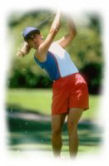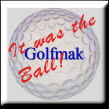

Play the Game

See Me on Skype
Links to Articles
My Email: mike@golfmak.com
Join 2,000 People who love golf at my Golfmak Yahoo Group!
Fixer-Uppers Could be Good Now
The Growing Private Club Dilemma!
MARKETING: Cheap prices as a means to compete is not always the answer
2008-9: Is this the Best Time Ever to Buy a Golf Course?
It was the Ball! What I think you should know.
What Not to Do as a First-Time Golf Course Buyer
The Future of the Golf Business as I see it.
Finance to Buy, or Refinance a Golf
Course. Start the Process Here
You'll think I'm NUTS saying we need 1,000 more golf courses - until you read this
Avoid Mistakes that Scare Lenders Away!
Marketing a Golf Course: Simple Rules
Golf Business Consultation. Your first one is Free.
Golf Business Consulting. What Will it Cost?
The Truth About the Golf Business Today.
The Golf Course Superintendent? Do You Need One?
Golf Course Feasibility. Have You Updated Yours?
Buying Default Golf Courses Can be Lucrative for Tax Purposes
A Golf Expert's Advice to Bankers
Golf Course Financing. Where to look.
New Golf Courses. Your Players!
Golf Operators. Watch Your DSR
How Banks Run Golf Courses. Have a look...
Tough Times for the Golf Business?
Golf's REITS and Trusts Distorting Factors
The Financial Downfall of Many Golf Courses -The "Big-Foot" Clubhouse?
The truth about the golf business.
Enjoy this editorial. "It was the Golf Ball!"
About Your Free Golf Business Consultation
Members. Keep them Happy and Spending
Golf Course Management Companies: An Opinion
Best information: The National Golf Foundation
GOLFMAK, INC.
Email: mike@golfmak.com
Phone: 941.739.3990
Fax: 425.675.6909
Michael A Kahn, Golf Business Consultant. From Grass to Finance. Over 50-Years at Your Service. Email: mike@golfmak.com
IT WAS THE BALL..........
I wrote this article in 2000. Read the last paragraph.
What 'event' do you think was most responsible for the growth of golf since WW2 - especially since 1960?
TV? NO!ARNOLD PALMER? NO!PRESIDENT DWIGHT D. EISENHOWER? NO!IT WAS THE DEVELOPMENT OF THE ONE-PIECE GOLF BALL!
Did you know that a Spalding Golf Ball cost $1.00 in 1919? You could mail a letter for a half a cent. An advertisement in 'Canadian Golfer Magazine' listed a new Ford at $495.00. Average annual earnings in 1919 was less than $700.00. Therefore, a golf ball cost 1/700th of an average person's annual income. If the price of a golf ball kept up with inflation, a new ball today would cost somewhere around $66.00 - about $692.00 a dozen.
In 1959 a Titleist golf ball sold for $1.25, or $15.00 a dozen in our Toronto, Canada Pro Shop (back when the Canadian dollar was worth about $1.15 US). The balls had balata covers that split when topped with a short iron - making the ball unplayable. Few golf balls made in 1960 could be used for more than one round of golf. The cheapest ball in our Toronto shop was a 70 compression 'marsh mallow' by Campbell of Canada at 50 cents each, $6.00 a dozen. The ball was only round until first struck. Meanwhile, my dad earned close to $5,000 a year - not bad in 1960. A 50 cent ball cost 1/10,000th of my Father's income.
An article circulated on the Internet by Golf World indicated golf balls by the dozen sold in November (2000) at an average of $24.81 a dozen, or about $2.06 a ball. Therefore, if the average golfer earns, say $50,000 a year, an average price golf ball costs about 1/25,000th of his or her annual income. But there's another reason the modern golf ball made golf more accessible for more people.Today, if you don't loose a ball, you can play it virtually all summer. And used golf balls are often sold over and over again until the dimples are virtually worn smooth. Then they might spend their last days wearing a red stripe.
So, what is the real reason the game of golf was able to grow so strongly since 1960? It's because the golf balls became so inexpensive? And that was because of Plastics!It was the chemistry of plastics that developed composites that make up golf balls today. I remember how the first cut-proof golf balls amazed us all! Among the first to show up in the early seventies was the one-piece ball. (I was told that the material used for the first one-piece balls was discovered by accident when a chemist dropped an experimental chunk designed for insulating electric wire and saw it bounce.) I experienced the earlier one-piece ball attempts - seeing many splitting in two or more pieces when struck hard (I adopted the one-piece ball on my driving range immediately in 1972 or 73, but splitting one-piece golf balls would cause problems jamming the ball washer and sometimes jamming the ball picker). But the cat was out of the bag and the golf ball became one of the most durable values of anything you can buy today. Yes, you can buy a golf ball today for $1 dollar that will fly over 300 yards, spin at over 4,000 revs, roll perfectly true, keep its color, and last several rounds (if not lost). The cover material called 'Surlyn' (a trade name) was another breakthrough.
Chemists can work compositions like Surlyn to react as they please. Want a ball to fly higher, more or less spin, go farther, stay white longer, or 'feel' softer? It's all in the recipe.Anyway, if we backed up the cost of today's golf balls to year 1919, a ball would have cost about about 1.4 pennies each, or less than 17cents a dozen. Then your average great grandfather could have afforded to play golf in 1919.
Therefore, it is the opinion of this writer that the recent developments in the durability and affordability of the golf ball has more to do with the growth of golf than any other factor. Only one problem...The architects and golf course developers are killing the game by spending too much to build new golf courses. They can't seem to build an enjoyable golf course for less than $5 million, including clubhouse, etc. Actually, they can, but they somehow refuse to try. Figure green fees at $10.00 per million spent to build a golf course and you can set the minimum price to play new $5 million golf courses at $50.00.
Funny thing! A golf ball cost $1.25 in 1959, when a round of golf on a Wednesday was $1.25 at our public golf course in Toronto, Canada. Public courses in the area now charge over $60.00 to play today, but the price of a golf ball is still not much more than a $1 dollar. In 1919, if you could find a public golf course, you could play it for about a quarter - when a golf ball cost $1.00. Too bad, because it's going to get worse.Unless cooler heads prevail in the construction of new golf courses, look for a decline in golf participation in the next few years - with or without Tiger. There are already a number of golf courses in financial trouble in Canada and the USA (some estimates as high as one in four golf courses cannot pay their bills). They can't pay their bills, because play has dropped.
Michael A Kahn, 2009 - 2010
EXPERIENCE (going back to 1956)
I have successfully managed: Private, Semi-Private, Public, Par-3, Executive Courses, and Lighted Practice Ranges.
Former Licensed Superintendent for Weedicides, Herbicides, Aquatic Weedicides, and Acquatic Herbicides
Finance Consultant: Placed over $100 million in golf course financing.
Former PGA Assistant Pro includiing the art of old-time backshop club repair (old fashioned methods),
Teaching professional Private and Group teaching for over 30-years
Former Golf Course Owner
Off-course retail store chain owner
Golf Course Broker - Over $100 millin in golf courses sold
Web site planning and publishing
Golf Course Turnaround Specialist
Clubhouse Design and Planning Consultant
Golf Course Buyer's Diligence Specialist
Golf Business Consultant
REVIEWED HUNDREDS OF GOLF COURSES
Ontario
Montana
Conecticutt
New York
Michigan
Ohio
Illinois
North Carolina
South Carolina
Georgia
Florida
Alabama
Louisiana
Texas
Caloifornia
Colorado
Kentucky
Tennessee
Minnesota
Isle of Wight (UK)
A PIONEER
Solid Range Balls
Tri-Plex Greens Mowers
Hydraulic Drive Reels
Cavity Back Golf Clubs
Private Brand Golf Clubs
Internet Tee Times Sales
Flymo (floating rotary mower)
Graphite Shafts
Indoor Golf Schools
Female Greens Employees
Non-Chemical Release Golf Course Fertilizers
Floodlit Night Golf
Video Tape Golf Teaching
Tee-Time Re-Selling
Golf Course Web Sites
100% Wall-to-wall bentgrass fairways
Using 3-wheel Motor Bikes as Work and Personnel Carriers (now trap rake vehicles)
Copywriting and Marketing Golf Courses on Radio, TV, Newspaper, and Billboards
Financial Statements for a Golf Course on Computer (Lotus 123)
Point-of-Sale Systems for Golf Courses

